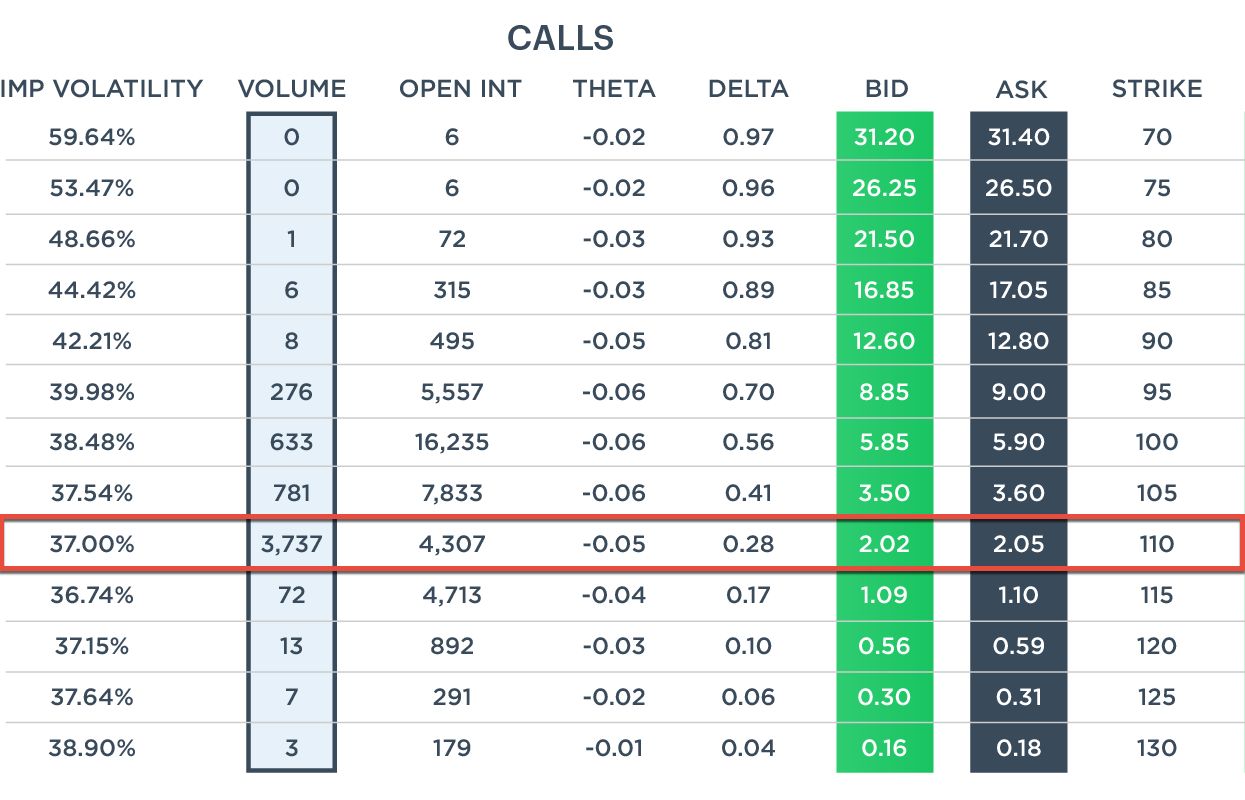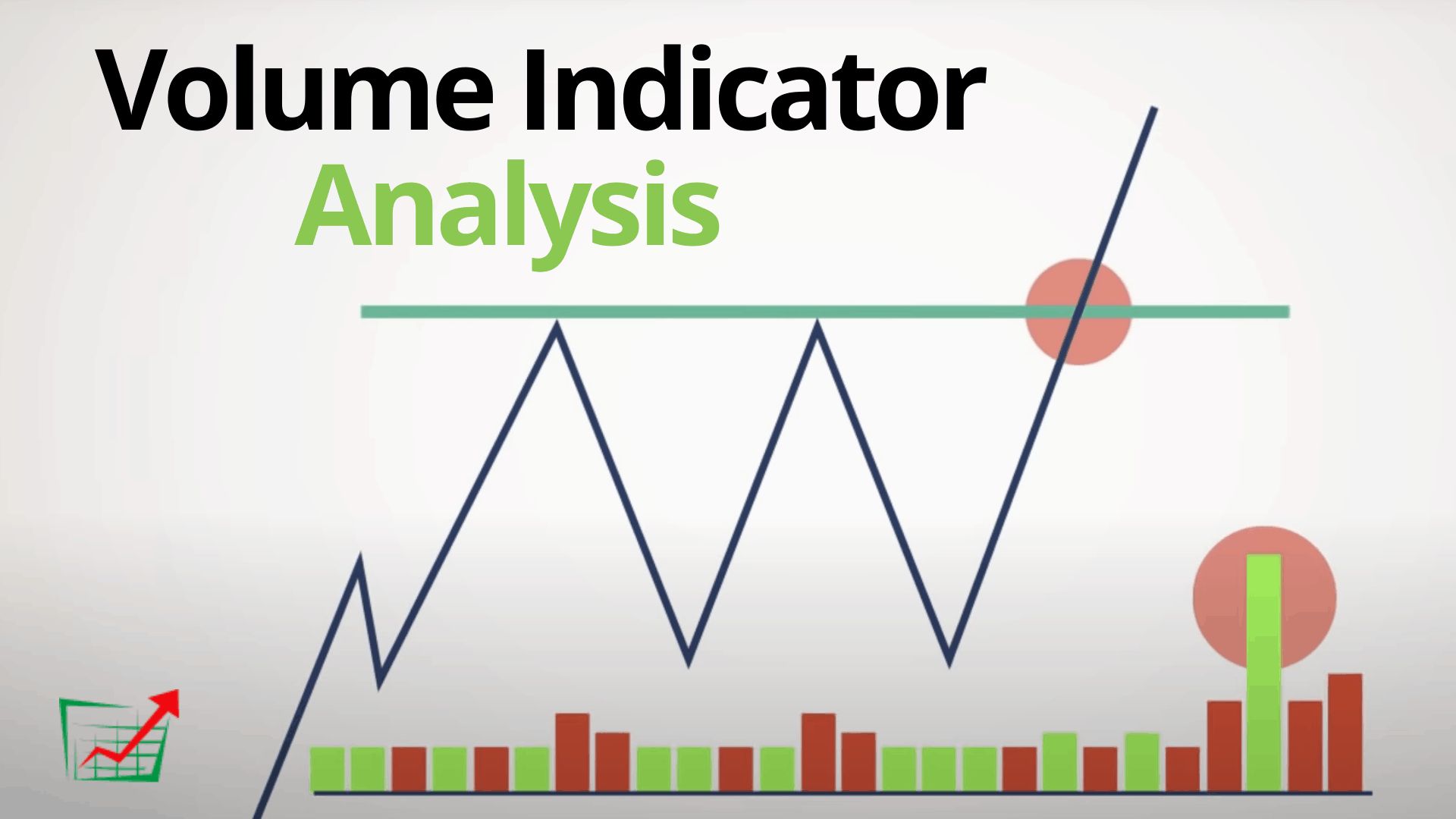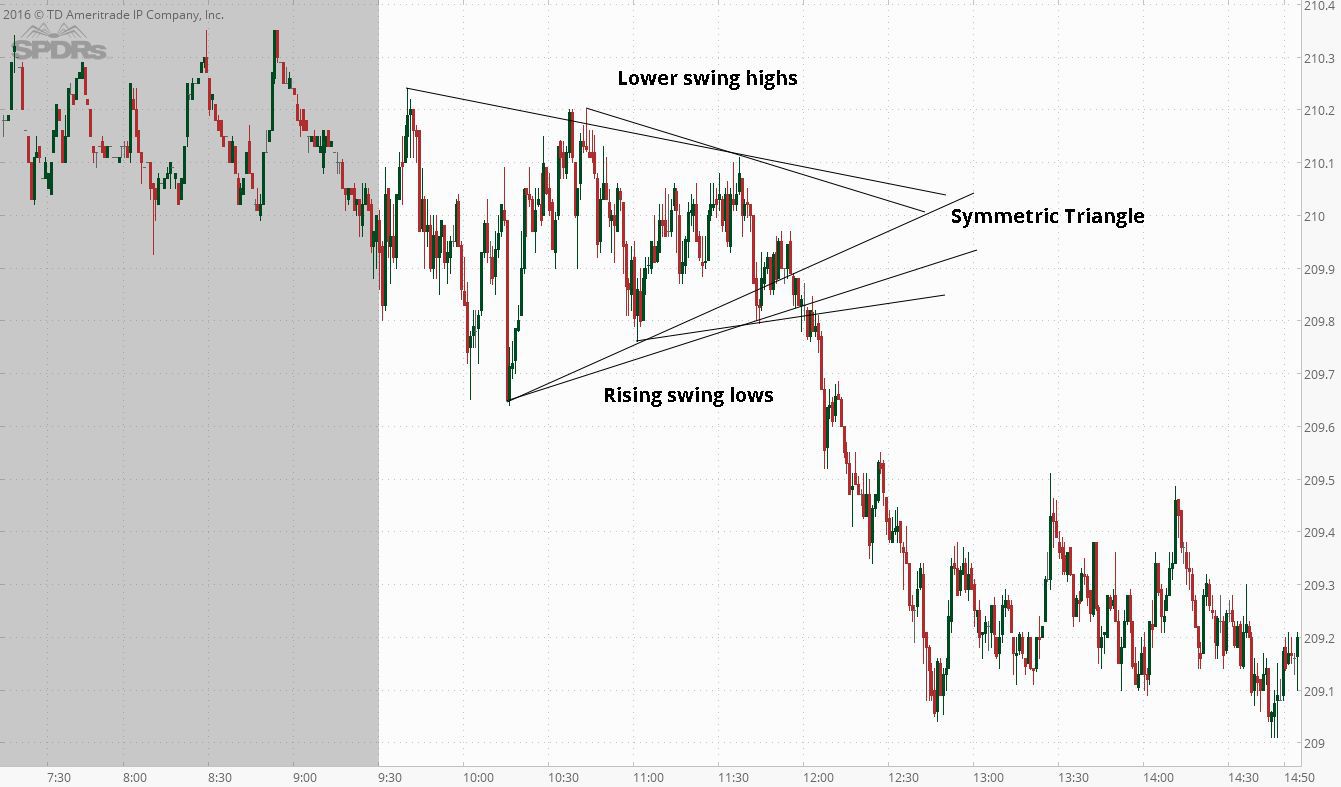Introduction
Welcome to the exciting world of day trading! If you’ve been intrigued by the idea of making money through actively buying and selling financial instruments within a single trading day, then you’re in the right place. Day trading has gained popularity among individuals looking for opportunities to grow their wealth and take control of their financial futures.
While starting day trading with just $100 may seem like a daunting task, it is possible with the right knowledge, strategy, and discipline. In this article, we will guide you through the essential steps and considerations in embarking on your day trading journey with a small account.
Before diving in headfirst, it’s crucial to understand that day trading involves significant risks. The potential for quick profits can also bring the risk of substantial losses. It’s essential to approach day trading as a skill to be developed over time rather than a get-rich-quick scheme.
In this guide, we will explore the foundational elements of day trading, including finding a reliable broker, understanding the basics of day trading, creating a trading plan, implementing risk management strategies, choosing the right trading platform, and utilizing essential technical analysis tools. We will also delve into the importance of discipline, patience, and practice in honing your day trading skills.
So, whether you’re an aspiring day trader or someone looking to take their trading to the next level, let’s get started on this thrilling journey of day trading with just $100. Remember, success in day trading requires dedication, continuous learning, and the ability to adapt to changing market conditions. Now, let’s take that first step towards achieving your day trading goals.
Finding a Reliable Broker
When starting day trading with a small account, finding a reliable broker is of utmost importance. A broker serves as the intermediary between you and the financial markets, enabling you to execute trades and access a wide range of financial instruments.
Here are a few key factors to consider when selecting a broker:
1. Regulation and Reputation: Ensure that the broker is regulated by a reputable financial authority. Look for reviews and feedback from other traders to gauge their reputation and reliability.
2. Trading Fees: Pay attention to the broker’s fee structure. Look for a broker that offers competitive commission rates or low spreads to minimize your trading costs.
3. Trading Platform: Evaluate the broker’s trading platform. It should be user-friendly, stable, and equipped with essential features and tools for analysis.
4. Range of Financial Assets: Consider the variety of financial instruments available for trading. Ideally, the broker should offer a wide range of assets, including stocks, forex, commodities, and cryptocurrencies.
5. Account Minimums: Look for brokers that allow you to open an account with a small initial deposit. This is particularly crucial when starting with a limited budget.
6. Customer Support: Assess the broker’s customer support services. Prompt and reliable support can be crucial, especially in times of technical difficulties or account-related issues.
7. Educational Resources: Choose a broker that provides educational resources such as webinars, tutorials, and market analysis to help you enhance your trading skills.
By considering these factors, you can find a reliable broker that aligns with your trading goals and provides a solid foundation for your day trading journey. Remember to carefully read and understand the broker’s terms and conditions before opening an account.
Lastly, keep in mind that finding a reputable broker is just the first step. It’s essential to conduct thorough research and seek advice from experienced traders to ensure the broker meets your specific trading requirements and provides a safe and secure trading environment for your funds.
Understanding Day Trading
Day trading is a trading strategy in which traders aim to profit from short-term price fluctuations in the financial markets. Unlike long-term investors who hold positions for extended periods, day traders typically enter and exit trades within the same trading day. This approach allows them to take advantage of intra-day market volatility and potentially generate quick profits.
Here are some key aspects to understand about day trading:
1. Timeframe: Day trading focuses on the short-term. Positions are usually opened and closed within a single trading day, avoiding the overnight exposure to market risks.
2. Market Volatility: Day traders rely on volatility to generate profits. Volatility refers to the magnitude of price movements in a given period. Higher volatility provides more trading opportunities, but it also carries higher risks.
3. Technical Analysis: Day traders heavily utilize technical analysis to identify short-term price patterns and trends. They analyze charts, indicators, and patterns to make informed trading decisions quickly.
4. Liquidity: Liquidity is the ease with which an asset can be bought or sold without causing significant price movements. Day traders focus on liquid markets, as they provide ample trading opportunities and ensure that positions can be entered and exited efficiently.
5. Risk Management: Effective risk management is crucial in day trading. Traders must set stop-loss orders to limit potential losses and implement proper position sizing techniques to manage risk effectively.
6. Emotions and Discipline: Day trading can be emotionally challenging. Traders need to control their emotions and stick to their trading plans, even during periods of losses or unexpected market movements.
It’s important to note that day trading involves substantial risks due to the fast-paced nature and high frequency of trades. It requires sound knowledge, experience, and dedication to succeed consistently. Novice traders are advised to practice with a demo account and gradually transition to trading with real money once they have acquired the necessary skills and confidence.
Understanding the fundamentals of day trading is crucial before diving into the markets. By acquiring a solid foundation and continuously learning and adapting to market conditions, you can navigate the world of day trading with confidence and potentially realize your financial goals.
Creating a Trading Plan
Creating a well-defined trading plan is essential for day traders, regardless of the size of their account. A trading plan serves as a roadmap that outlines the rules, strategies, and goals for your trading activities. It provides structure and discipline, guiding your decision-making process and helping you stay focused on your objectives.
Here are the key elements to consider when creating a trading plan:
1. Goals and Objectives: Clearly define your trading goals. Are you looking to generate a consistent income or aiming for long-term capital growth? Setting realistic and achievable goals will help you stay motivated and focused on your trading journey.
2. Trading Strategy: Determine the trading strategy that aligns with your goals and suits your trading style. You might consider using technical analysis, fundamental analysis, or a combination of both. It’s important to choose a strategy that you understand and feel comfortable implementing.
3. Risk Management: Implement effective risk management techniques to protect your account from significant losses. Determine the maximum percentage of your account capital to risk on each trade and set stop-loss orders accordingly. Additionally, establish rules for managing profits and taking partial profits at specific levels.
4. Trade Entry and Exit Criteria: Define clear rules for entering and exiting trades. This can be based on technical indicators, price patterns, or fundamental factors. Having specific criteria for trade selection will help you maintain a consistent and disciplined approach.
5. Timeframe and Trading Session: Determine the specific timeframes you will trade and the trading sessions you will be active in. This will help you focus your time and energy when market conditions are optimal for your trading strategy.
6. Trading Journal: Maintain a trading journal to track your trades, analyze your performance, and identify areas for improvement. Record the details of each trade, including entry and exit points, reasons for the trade, and emotions experienced during the trade. Regularly reviewing your journal will help you refine your strategy and develop as a trader.
Remember, a trading plan is not set in stone and should be periodically reviewed and adjusted as needed. The markets evolve, and so should your plan. Additionally, committing to your trading plan is essential. Avoid making impulsive decisions based on emotions or outside influences that deviate from your established rules.
By creating a comprehensive and disciplined trading plan, you can approach day trading with a clear and systematic approach. It will help you stay focused, manage your risks, and increase the likelihood of consistent profitability over time.
Risk Management Strategies
Effective risk management is a crucial aspect of day trading, regardless of the size of your account. It helps protect your capital and ensures that you can continue trading even during unfavorable market conditions. Implementing proper risk management strategies will help you minimize potential losses and increase the likelihood of long-term profitability.
Here are some key risk management strategies to consider:
1. Position Sizing: Determine the appropriate position size for each trade based on your account size and risk tolerance. A general rule of thumb is to risk no more than 1-2% of your account capital on any single trade. By limiting your exposure, you can protect your account from significant losses and sustain your trading activities over the long term.
2. Stop-Loss Orders: Always use stop-loss orders to limit your potential losses. A stop-loss order is an instruction to sell a security if it reaches a specific price level. By setting a predetermined stop-loss level, you ensure that your losses are contained within your risk tolerance level.
3. Take-Profit Targets: Set clear take-profit targets to secure your profits. This allows you to define your profit target and take action when the market reaches that level. Taking partial profits along the way can also help protect your gains and reduce the risk of giving back profits if the market reverses.
4. Risk-Reward Ratio: Assess the risk-reward ratio for each trade before entering it. Aim for trades with a favorable risk-reward ratio, where the potential reward outweighs the potential risk. A commonly used rule is to target trades with at least a 1:2 risk-reward ratio, where the potential reward is at least twice the potential risk.
5. Diversification: Avoid putting all your eggs in one basket by diversifying your trades. Instead of concentrating on a single asset or market, spread your trades across various instruments and sectors. Diversification helps reduce the impact of individual trade losses and increases the likelihood of overall profitability.
6. Emotional Control: Keeping emotions in check is vital for effective risk management. Fear and greed can lead to impulsive and irrational trading decisions. Stick to your trading plan, follow your risk management rules, and avoid making emotional decisions based on short-term market fluctuations.
Remember, risk management should be an integral part of every trading decision you make. By implementing these strategies and consistently adhering to your risk management rules, you can protect your trading capital and achieve sustainable growth over time.
Choosing the Right Trading Platform
Choosing the right trading platform is crucial for day traders as it directly impacts your trading experience and ability to execute trades efficiently. The trading platform serves as your gateway to the financial markets, providing access to real-time market data, charting tools, order execution capabilities, and other essential features. Here are key factors to consider when selecting a trading platform:
1. User-Friendly Interface: Look for a trading platform that is intuitive and user-friendly. Navigating the platform should be easy, allowing you to quickly find the necessary tools and execute trades without any technical difficulties.
2. Real-Time Market Data: Ensure that the platform offers real-time market data, including price quotes, volume, and other relevant information. Accurate and up-to-date data is crucial for making informed trading decisions.
3. Charting Tools and Indicators: Analyzing price charts is an essential part of day trading. Choose a platform that offers robust charting capabilities, including a variety of technical indicators, customizable timeframes, and drawing tools.
4. Order Types and Execution: Evaluate the order types available on the platform. It should allow you to place market orders, limit orders, stop orders, and other advanced order types. Additionally, ensure that order execution is fast and reliable, minimizing the risk of slippage.
5. Mobile Trading: Consider whether the platform has a mobile trading app. Mobile trading allows you to monitor the markets and manage your trades on the go, providing flexibility and accessibility.
6. Platform Stability: Stability is crucial when it comes to trading platforms. Look for a platform that has a reputation for reliability, with minimal downtime or technical glitches.
7. Customer Support: Choose a platform with responsive customer support. In case of any technical issues or questions, prompt and reliable support can be invaluable.
8. Additional Features: Consider any additional features that the platform offers, such as news feeds, economic calendars, or social trading functions. These features can enhance your trading experience and provide access to valuable market information.
Keep in mind that some brokers offer their proprietary trading platforms, while others provide popular third-party platforms. Take the time to explore different options and consider your specific trading needs before making a decision.
Ultimately, the right trading platform should align with your trading style and provide a seamless and efficient trading experience. By choosing a reliable and user-friendly platform, you can focus on analyzing the markets and executing trades with ease and confidence.
Essential Technical Analysis Tools
Technical analysis is a fundamental aspect of day trading as it helps traders make informed decisions based on historical price patterns and statistical trends. By analyzing price charts and utilizing technical analysis tools, traders can identify potential entry and exit points, support and resistance levels, and other key market indicators. Here are some essential technical analysis tools to incorporate into your day trading strategy:
1. Candlestick Charts: Candlestick charts are a popular charting technique used in technical analysis. They provide valuable information about price action, including opening and closing prices, as well as high and low prices for a specific time period. Candlestick patterns can indicate potential trend reversals or continuation and are widely used by day traders.
2. Moving Averages: Moving averages help identify trends and smooth out price data over a specific period. The two commonly used types of moving averages are the simple moving average (SMA) and the exponential moving average (EMA). Traders often use moving averages to determine key support and resistance levels and potential areas of price reversal.
3. Relative Strength Index (RSI): The RSI is a popular momentum oscillator that measures the speed and change of price movements. It provides insights into whether an asset is overbought or oversold, indicating potential reversal points. Traders often use the RSI to identify divergences between price action and the RSI indicator, which can signal a trend reversal.
4. Bollinger Bands: Bollinger Bands consist of a simple moving average and two standard deviation bands. They help traders visualize volatility and potential price levels. When the price reaches the outer bands, it may indicate overbought or oversold conditions, suggesting the possibility of a price reversal.
5. Fibonacci Retracement: Fibonacci retracement tools help identify potential support and resistance levels based on the Fibonacci sequence. Traders use these retracement levels to identify areas where price may reverse or consolidate before continuing the trend.
6. Volume Indicators: Volume indicators provide insights into the strength and intensity of price movements. They help traders confirm trends and identify potential breakouts or reversals. Common volume indicators include On-Balance Volume (OBV) and Volume Weighted Average Price (VWAP).
These are just a few essential technical analysis tools used by day traders. It’s essential to understand and experiment with different tools to find the ones that work best for your trading style and match the market conditions you trade. Remember, technical analysis is not foolproof and should always be used in conjunction with other indicators and analysis methods.
By incorporating these technical analysis tools into your day trading strategy, you can gain valuable insights into price movements, identify potential trading opportunities, and make informed decisions as you navigate the dynamic world of day trading.
Developing Discipline and Patience
Developing discipline and patience are essential qualities for successful day trading. The fast-paced and volatile nature of the markets can easily tempt traders to deviate from their strategies and make impulsive decisions. However, by cultivating discipline and patience, you can maintain a focused and consistent approach to your trading activities.
1. Stick to Your Trading Plan: One of the key ways to develop discipline is to create and adhere to a well-defined trading plan. Your plan should outline your risk tolerance, entry and exit criteria, and overall trading strategy. By sticking to your plan, you avoid making impulsive trades driven by emotions or external factors.
2. Avoid Chasing Trades: Patience is crucial in day trading. Avoid chasing trades or entering positions based on fear of missing out (FOMO). Instead, patiently wait for setups that align with your trading plan and risk parameters. Remember that there will always be new trading opportunities, so it’s better to miss out on a trade than to enter a risky position.
3. Embrace Losses as Learning Opportunities: Accept that losses are a part of trading and view them as learning opportunities. Instead of dwelling on losses, focus on analyzing what went wrong and how you can improve for future trades. Maintaining discipline means accepting losses and avoiding revenge trading or trying to recoup losses quickly.
4. Manage Your Emotions: Emotional control is crucial in day trading. Fear and greed can lead to impulsive and irrational decision-making. Develop self-awareness and learn to recognize when emotions are influencing your trading decisions. Take breaks when needed, practice mindfulness techniques, and have strategies in place to calm your mind and emotions.
5. Trade with Purpose and Confidence: Day trading requires conviction in your trading decisions. Once you have done your analysis and identified potential trades, trade with confidence and trust in your strategy. Avoid second-guessing or adding unnecessary complexity to your plan.
6. Continuous Learning and Adaptation: The markets are constantly evolving, and as a trader, you need to adapt and stay updated with market trends and new strategies. The more you learn and adapt, the better equipped you will be to make informed decisions and stay disciplined.
Developing discipline and patience takes time and practice. Be mindful of your thoughts and actions during your trading journey, and focus on building good habits that support disciplined and patient trading. Remember that consistent profitability comes with a combination of disciplined execution and patience for the right opportunities to present themselves.
Practicing with a Demo Account
Practicing with a demo account is an invaluable step for novice day traders. A demo account allows you to simulate real trading conditions using virtual funds, providing a risk-free environment to develop and refine your trading skills. Here are the key benefits of practicing with a demo account:
1. Familiarization with the Trading Platform: Demo accounts enable you to become comfortable with the trading platform of your choice. You can learn how to navigate the platform, execute trades, and access the various tools and features it offers without risking actual money.
2. Strategy Testing and Refinement: Demo accounts allow you to test different trading strategies and refine your approach. You can experiment with various indicators, timeframes, and risk management techniques to see what works best for you. This helps you identify strengths and weaknesses in your strategy without the pressure of real financial consequences.
3. Market Observation and Analysis: While using a demo account, you can observe and analyze market movements and trends. This helps you understand how different asset classes respond to market conditions and enhances your ability to spot potential trade setups in the live markets.
4. Emotional Control and Psychology: Trading can evoke strong emotions, especially when real money is at stake. Practicing with a demo account helps you develop emotional control and manage the psychological aspect of trading by allowing you to trade without the fear of losing real money. It prepares you to handle the ups and downs of the market with a calm and rational mindset.
5. Trade Execution and Timing: Demo accounts enable you to practice trade execution and timing. You can test your ability to enter and exit trades at the desired levels, experiment with different order types, and gauge the speed and efficiency of trade execution offered by the trading platform.
6. Learning from Mistakes and Building Confidence: Making mistakes is a natural part of the learning process. With a demo account, you can make and analyze these mistakes without incurring any financial loss. This allows you to learn valuable lessons, refine your strategy, and build confidence in your abilities before transitioning to live trading.
While using a demo account is an essential practice, it’s important to keep in mind that trading with real money involves different emotions and psychological factors. As you gain confidence and consistency with your virtual trades, gradually transition to trading with small amounts of real money to get a feel for the live trading environment.
Practicing with a demo account provides the opportunity to learn, improve, and gain experience before risking your hard-earned money in the real markets. Take advantage of this valuable tool to hone your skills, develop your trading strategy, and build the confidence necessary to succeed as a day trader.
Starting with a Small Account
Starting day trading with a small account is a common scenario for many new traders. While it may seem challenging, it’s important to remember that successful day trading is not solely determined by the size of your account but rather by your knowledge, skills, and disciplined approach. Here are some key considerations when starting with a small account:
1. Realistic Expectations: It’s crucial to have realistic expectations when starting with a small account. Understand that growing your account will take time and consistent effort. Focus on learning and improving your trading skills rather than solely focusing on the profit potential.
2. Proper Risk Management: Effective risk management is particularly important when trading with a small account. Ensure that you are only risking a small percentage of your account capital on each trade, adhering to sound risk management principles. This protects your account from significant losses and allows you to stay in the game for the long run.
3. Trade Selectively: With a small account, it’s essential to be selective about the trades you take. Focus on quality over quantity and prioritize trades that offer the best risk-reward opportunities. Avoid overtrading and chasing trades that do not align with your trading strategy.
4. Utilize Leverage with Caution: Leverage can amplify both profits and losses. It is important to understand the risks involved and use leverage with caution. Consider the impact of leverage on your account equity and ensure you have a clear understanding of the margin requirements and potential consequences.
5. Patience and Discipline: Starting with a small account requires patience and discipline. Avoid the temptation to take excessive risks or make impulsive trades to quickly grow your account. Stick to your trading plan, follow your risk management rules, and be patient as you gradually build your account over time.
6. Continuous Learning and Adaptation: Learning should be an ongoing process in day trading. Continuously educate yourself, refine your strategies, and adapt to changing market conditions. Develop a growth mindset and remain open to new opportunities and ideas that can help you improve your trading performance.
Starting with a small account may present some initial challenges, but it can also offer valuable learning experiences and opportunities for growth. Remember that consistency and discipline are key, and focus on building a strong foundation of knowledge and skills. As you gain experience and grow your account through consistent and disciplined trading, you can gradually increase your position sizes and potentially achieve your day trading goals.
Identifying and Analyzing Potential Trades
Identifying and analyzing potential trades is a crucial step in day trading. The ability to recognize opportunities with strong profit potential while managing risks is essential for success. Here are some key factors to consider when identifying and analyzing potential trades:
1. Technical Analysis: Utilize technical analysis tools and indicators to identify potential trade setups. Look for patterns, trends, breakouts, and support/resistance levels that indicate potential entry or exit points. Technical analysis can provide insights into market sentiment and help you make informed trading decisions.
2. Fundamental Analysis: Consider fundamental factors that may impact the price of the assets you trade. Stay informed about company news, economic indicators, earnings reports, and other relevant market events. Fundamental analysis can help you understand the underlying value and potential future performance of the assets you are considering.
3. Market Volatility: Volatility can present opportunities for day traders. Look for assets and markets that exhibit sufficient volatility to provide trading opportunities. Higher volatility can offer increased profit potential but also comes with higher risks, so it’s important to manage your risk accordingly.
4. Risk-Reward Ratio: Assess the risk-reward ratio of potential trades before entering them. Aim for trades that offer a favorable risk-reward ratio, where the potential reward is greater than the potential risk. This will help ensure that potential profits outweigh potential losses over the long term.
5. Timeframe Analysis: Consider the timeframe that suits your trading strategy. Day traders commonly analyze multiple timeframes, from shorter intraday charts to longer-term charts, to gain a comprehensive understanding of the asset’s price dynamics. This helps in identifying trends, patterns, and potential entry or exit points.
6. News and Market Sentiment: Stay informed about market news and sentiment. News can impact investor sentiment and market movements. Avoid trading during major news releases, as it can lead to unpredictable price volatility. Instead, use news events as opportunities to assess market sentiment and adapt your trading strategies accordingly.
7. Risk Management: Effective risk management is critical when identifying and analyzing potential trades. Set clear stop-loss orders to protect against excessive losses and establish profit targets to secure your gains. Consider your risk tolerance and position sizing while assessing the potential risks of each trade.
Remember, the process of identifying and analyzing potential trades requires continuous learning and practice. It’s important to refine your skills, adapt to changing market conditions, and learn from both successful and unsuccessful trades. Developing a systematic approach to analyzing potential trades and sticking to your trading plan will help you make consistent and informed decisions in your day trading endeavors.
Executing Trades and Monitoring Positions
Executing trades and monitoring positions is a critical aspect of day trading. Once you have identified a potential trade and conducted your analysis, it’s time to execute the trade and actively manage your positions. Here are key considerations when executing trades and monitoring positions:
1. Order Entry: Use the trading platform to enter your trade with precision. Double-check the order details, including the quantity, order type (e.g., market order or limit order), and any additional parameters such as stop-loss and take-profit levels. Ensure that you are comfortable with the trade before clicking the ‘submit’ button.
2. Trade Management: Monitor your open positions closely. Keep an eye on market conditions and any developments that may impact your trades. Set alerts or use trailing stop orders to manage your positions dynamically as the market moves in your favor. Regularly assess whether the trade is still aligned with your initial analysis and adjust your strategy as necessary.
3. Stop-Loss and Take-Profit Orders: Set stop-loss and take-profit orders to manage your potential losses and secure your profits. These orders help limit your downside risk and protect your account from significant losses. Adjust these levels as the trade progresses or as new information becomes available.
4. Trailing Stops: Consider using trailing stop orders to protect your profits and potentially lock in gains. Trailing stops automatically adjust the stop-loss level as the price moves in your favor, allowing you to capture additional profits if the trade continues in the desired direction.
5. Market Volatility Monitoring: Keep an eye on market volatility, especially during news releases or periods of high volatility. Volatile markets can be both rewarding and risky, so adjust your positions and risk management strategies accordingly to protect against sudden market movements.
6. Trade Journals and Performance Tracking: Maintain a trade journal to record the details of your executed trades. This includes entry and exit points, reasons for the trade, and any observations or lessons learned. Regularly review your trade journal to assess your performance, identify patterns, and continually improve your trading strategy.
7. Emotions and Discipline: Emotional control and discipline are crucial during trade execution and position monitoring. Avoid emotional decision-making based on fear or greed. Stick to your trading plan and risk management strategies, even in the face of potential profits or losses. Emotional trading can lead to impulsive decisions and undermine your overall trading performance.
Executing trades and monitoring positions require focus, discipline, and attention to detail. By staying vigilant, managing your trades effectively, and continuously refining your strategy, you increase the likelihood of consistent profitability in your day trading endeavors.
Learning from Mistakes and Improving
Learning from mistakes is an essential part of the day trading journey. No trader is immune to making errors or experiencing losses. However, the key to long-term success lies in the ability to learn from those mistakes and continuously improve. Here are some important considerations when it comes to learning from mistakes and improving as a day trader:
1. Analyze Losing Trades: Take the time to thoroughly analyze your losing trades. Look for patterns, identify any mistakes or errors in your analysis or execution, and understand what went wrong. By analyzing your losing trades, you can gain valuable insights that can help you avoid similar mistakes in the future.
2. Keep a Trading Journal: Maintain a trading journal to record your thoughts, observations, and lessons learned from each trade. This allows you to review and reflect on your trading decisions, assess your performance, and identify areas for improvement. A trading journal is a powerful tool for continuous learning and personal growth as a day trader.
3. Identify Behavioral Patterns: Pay attention to your emotions and behavioral patterns while trading. Recognize if you tend to make impulsive decisions, take excessive risks, or deviate from your trading plan. Identifying such patterns can help you address and overcome any psychological barriers that may hinder your trading performance.
4. Seek Feedback and Mentorship: Seek feedback from experienced traders or consider working with a mentor. Engage in trading communities or forums where you can discuss your challenges and learn from others who have gone through similar experiences. A fresh perspective or guidance from someone with more experience can provide valuable insights and accelerate your learning curve.
5. Continuously Educate Yourself: Day trading is a dynamic field, and it’s crucial to stay updated with market trends, news, and evolving trading strategies. Invest time in expanding your knowledge through books, courses, webinars, and other educational resources. Continuous education helps you stay ahead of market developments and equips you with the tools to improve your trading skills.
6. Practice Patience and Persistence: Becoming a consistently profitable trader takes time and persistence. Don’t let setbacks deter you. Stay patient, stay committed to your trading plan, and focus on continuous improvement. Understand that learning from mistakes is a continuous process, and each mistake brings an opportunity for growth.
Remember, the path to success as a day trader is not linear. It requires a strong mindset, discipline, and a willingness to learn from mistakes. Embrace the learning process, strive for improvement, and maintain a growth mindset. With each mistake, you come closer to becoming a more skilled and resilient day trader.
Building Consistency and Profitability
Building consistency and profitability is the ultimate goal of every day trader. Achieving consistent profits requires a combination of disciplined execution, sound risk management, and continuous improvement. Here are some key considerations when it comes to building consistency and profitability in your day trading endeavors:
1. Stick to Your Trading Plan: Consistency starts with adhering to your trading plan. Define your strategy, risk management rules, and entry and exit criteria. Avoid deviating from your plan due to emotions or impulsive decisions. Consistent adherence to your trading plan helps you avoid erratic and irrational trading behaviors.
2. Focus on Risk Management: Effective risk management is crucial for long-term profitability. Set appropriate position sizes, use stop-loss orders, and regularly assess your risk-reward ratios. By managing your risks, you protect your capital during losing trades and ensure that successful trades contribute positively to your overall profitability.
3. Manage Emotions and Psychological Factors: Emotions can heavily influence trading decisions. Manage your emotions by staying disciplined, developing self-awareness, and applying techniques like mindfulness and breathing exercises. Avoid making impulsive decisions driven by fear or greed, as they can disrupt your consistency and profitability.
4. Continuously Learn and Adapt: The markets are constantly evolving, and as a trader, you must adapt and learn continuously. Stay updated with market trends, explore new trading strategies, and be open to incorporating new techniques into your trading approach. Continuous learning helps you stay ahead of the curve and enhances your decision-making process.
5. Focus on Quality over Quantity: It’s important to prioritize high-quality trades over a large volume of trades. Quality trades are those that align with your trading plan and have a favorable risk-reward ratio. Instead of chasing every opportunity, patiently wait for setups that offer the highest probability of success.
6. Review and Evaluate Your Performance: Regularly review and evaluate your trading performance. Assess your trades, analyze patterns, and identify areas for improvement. Learn from both your winning and losing trades to refine your strategy and decision-making process. Consider keeping a trading journal to track your progress and highlight areas that require adjustment.
7. Patience and Long-Term Perspective: Building consistency and profitability in day trading takes time. Patience is crucial, as it allows you to avoid chasing short-term gains and focus on long-term success. Remember that consistent profitability is a marathon, not a sprint.
Building consistency and profitability as a day trader is a journey that requires discipline, patience, and continuous improvement. By sticking to your trading plan, managing your risks effectively, and adapting to evolving market conditions, you can increase your chances of achieving consistent profits and long-term success as a day trader.
Strategies for Growing Your Account
Growing your trading account is a goal shared by many day traders. While it requires careful planning, disciplined execution, and an understanding of market dynamics, there are several strategies you can implement to increase your chances of successfully growing your account. Here are some key strategies for account growth:
1. Continuously Improve Your Strategy: Regularly evaluate and refine your trading strategy. Identify areas for improvement, analyze your past trades, and adapt your approach based on changing market conditions. By continuously improving your strategy, you can enhance your trading edge and increase the probability of profitable trades.
2. Gradually Increase Position Sizes: As your account grows, you can gradually increase your position sizes. However, it’s important to do this cautiously and within the confines of proper risk management. Avoid taking on excessive risks or overleveraging your trades. Responsible position sizing ensures that your account growth is sustainable and aligned with your risk tolerance.
3. Capitalize on Market Opportunities: Stay proactive and capitalize on market opportunities as they arise. Look for favorable risk-reward trades with high-probability setups. As you gain experience, you will develop a keen eye for potential market movements and the ability to seize profitable opportunities.
4. Diversification and Asset Allocation: Diversify your trading activities and consider allocating your capital across multiple assets and markets. This helps spread your risk and potentially increase returns. However, ensure that you have a solid understanding of each asset and market you choose to trade to make informed decisions.
5. Use Compounding Effects: Compound your profits by reinvesting a portion of your gains back into your trading account. By compounding your profits, you allow your account to grow exponentially over time. However, exercise caution and don’t let compounding lead to excessive risk-taking.
6. Stay Disciplined and Emotionally Stable: Emotional discipline is crucial for long-term account growth. Avoid making impulsive decisions driven by fear or greed. Stick to your trading plan, follow your risk management rules, and don’t let emotions dictate your actions. Maintaining emotional stability allows you to make rational and consistent trading decisions.
7. Continuous Education and Learning: Commit to ongoing education and learning in the field of trading. Stay updated with market trends, news, and new trading strategies. Attend webinars, read books, and follow reputable trading resources to expand your knowledge. The more you learn, the better equipped you’ll be to adapt to changing market conditions and identify profitable opportunities.
It’s important to remember that growing your account takes time and patience. There will be periods of drawdowns and setbacks. By following a structured growth plan, maintaining discipline, and continually refining your trading skills, you can increase your chances of steady and sustainable account growth over the long term.
Conclusion
Embarking on the journey of day trading with a small account is an exciting endeavor that requires knowledge, discipline, and continuous learning. By following the strategies and considerations outlined in this guide, you can set yourself up for success in the world of day trading.
Starting with a small account should be approached with realistic expectations and an understanding that consistent profitability takes time to achieve. Success in day trading requires a well-defined trading plan, effective risk management strategies, and a disciplined approach to executing trades.
Take the time to identify a reliable broker, understand the fundamentals of day trading, create a trading plan that suits your goals, and implement risk management techniques to protect your account. Utilize the right trading platform, leverage technical analysis tools, and focus on developing discipline and patience throughout your trading journey.
Practice with a demo account to refine your skills without risking real money, and gradually transition to trading with small amounts of real capital. Learn from your mistakes, continuously improve your trading abilities, and seek feedback from experienced traders to accelerate your progress.
Building consistency and profitability requires a long-term perspective, continuous education, and the ability to adapt to changing market conditions. By implementing effective strategies for growing your account, such as improving your trading strategy, gradually increasing position sizes, and staying disciplined, you increase your chances of realizing your financial goals.
Remember, day trading is a skill that develops over time. Be patient, stay disciplined, and remain committed to expanding your knowledge and refining your trading skills. With perseverance and a dedication to continuous improvement, you can increase the likelihood of achieving long-term success as a day trader.

























